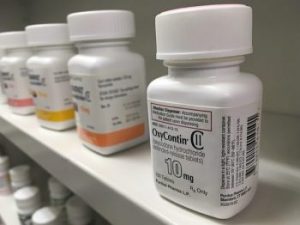America's Opioid Epidemic

You’ve likely read and heard many statistics about texting and driving – an epidemic that is unnecessarily claiming thousands of lives each year.
And now, there is another increasing threat to our roads, school zones and crosswalks: opioids.
Opioids are prescription painkillers that are odorless, widely prescribed, legal and much easier to conceal than other drugs. This makes spotting a driver who may be an abuser that much more difficult.
But should we be worried about drivers who take opioids?
A new study from select states over a 10-year period by the American Journal of Public Health showed that traffic fatalities where opioids were found in the bloodstream increased deaths among males by more than 400%, and females by more than 700%.
We should certainly be concerned.
There is currently no law against opioid use while driving, just as there is no law against using antihistamines that may also cause drowsiness. However, opioid addiction is on the rise, putting more and more otherwise reasonable people behind the wheel while under the influence.
Daily opioid use is common, and drivers can experience drowsiness, cloudy thinking and delayed reactions during regular daily activities. This is troubling when many of these daily activities could include parents running errands and picking up their children from school or sports practice.
Opioid Prescriptions Increase 400%
This statistic should not be surprising, as the number of prescriptions for opioid pain killers grew from 76 million in 1991 to nearly 300 million in 2014 – a near 400% increase according to a Columbia University study.
The study included data for 37,000 fatalities from the following states:
- California
- Hawaii
- West Virginia
- Rhode Island
- New Hampshire
The study does not include more states, partly because each state conducts its own independent tests. The above five states, including the two which border our state of Connecticut, test for drugs in drivers of fatalities within one hour of the crash.
How to Spot Addiction
Unfortunately, there are no sobriety tests for opioid use as there are with alcohol. Yet, you can look for certain “red flag” indicators of opioid abuse when discussing carpooling or weekend sporting events with other parents. Take a look at the following list provided by the American Society for Addiction Medicine and the National Institute on Drug Abuse.
Warning signs of opioid abuse may include:
1. Withdrawing from Activities
Opioids naturally make people drowsy and tired, making them less social and involved. If a parent who has previously been involved with community activities stops participating completely without proper reason, it could be a warning sign.
2. Changed Behavior in Children
Children can be easily affected and may be the first sign that a problem could exist. If a child’s parents are not often available, frequently late, or otherwise removed without reason, perhaps a conversation or visit would be helpful.
3. Flu-Like Symptoms
When under the influence of opioids, the eye’s pupils are often pinpoint and do not dilate with changes of light. In addition to vision impairment, as the opioid begins to wear off, users may have back and leg pain, itchy arms, nausea or frequent yawning.
4. Secrecy
Most opioid abusers were originally legitimately prescribed the drug for an injury or pain relief following a medical procedure. If after the recovery time has passed they withdraw or are uninterested in speaking as they once were, this can be a sign of abuse. Many opioid abusers will try and hide their addiction or will decline discussing details surrounding their use of them.
5. Frequent Doctor Visits
Since the user may be conscious about abusing the prescriptions, they will often add credibility to their use of opioids through “doctor hopping.” This often means paying out of pocket for doctor visits, which can in turn place a financial impact on the family.
Drowsy Driving Leads to Accidents
While some studies have variants that make drawing conclusions difficult, the fact remains that more adults under the age of 50 are dying from opioid addictions, even more than car accidents and more than all other illicit drugs combined.
More opioids are being found in drowsy driving-related traffic fatalities than 20 years ago, which means our roads are more dangerous. Pharmacists and doctors alone may not be able to see the addiction, but increasing awareness in other parents could be what helps a hurting family.
What You Can Do
In 2016, an opioid hotline and multiple walk-in centers were set up in Connecticut, with which Governor Malloy announced, “We need to do everything possible to fight addiction - this is no doubt an alarming nationwide trend. This number is a commonsense step that we hope will support those who need it.”
The toll-free number is 1-800-563-4086, and help is available 24 hours a day. You can also view a list of walk-in centers here.
You can make a positive impact in your community. If you suspect a parent or neighbor has an opioid addiction, we encourage you to take the brave step of confiding in a professional; for the safety of our roads, crosswalks and our children.
